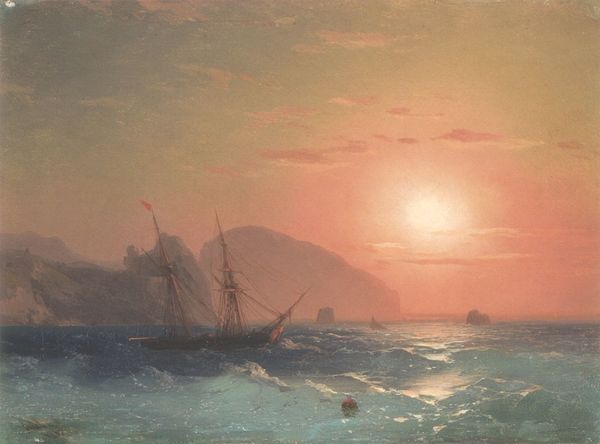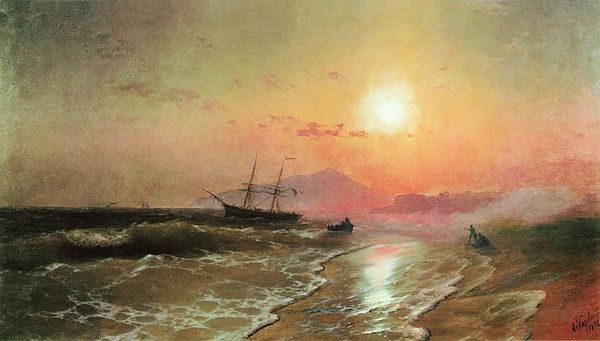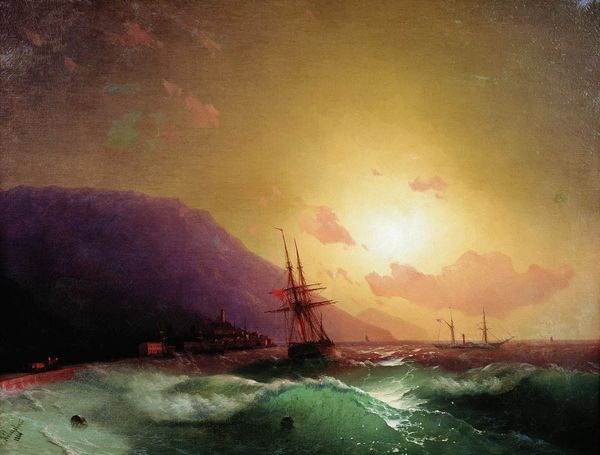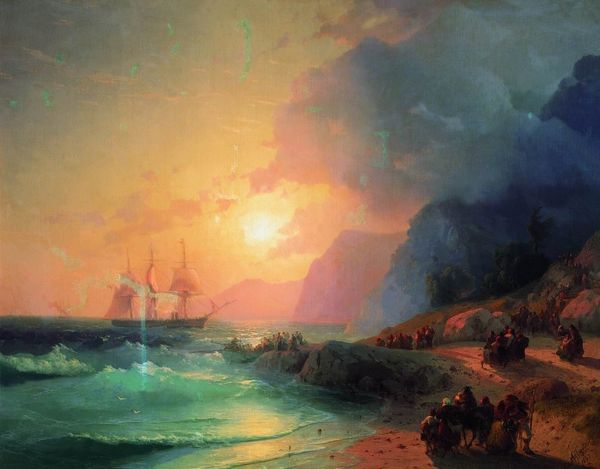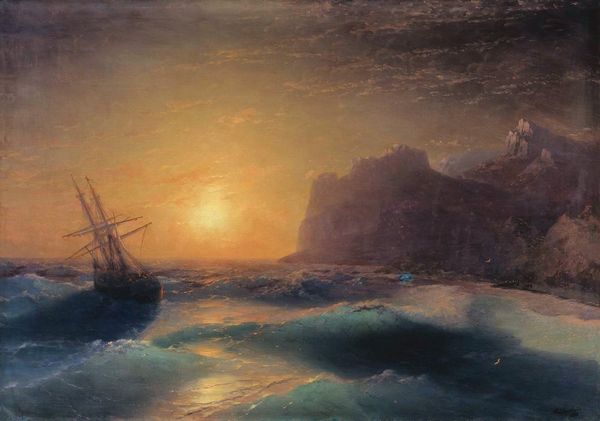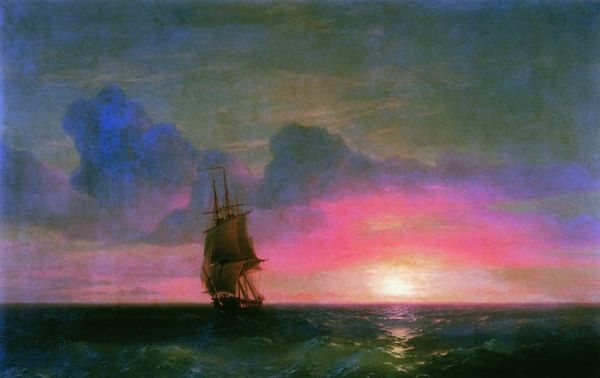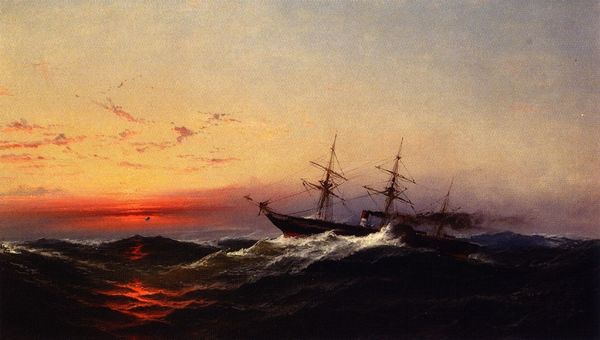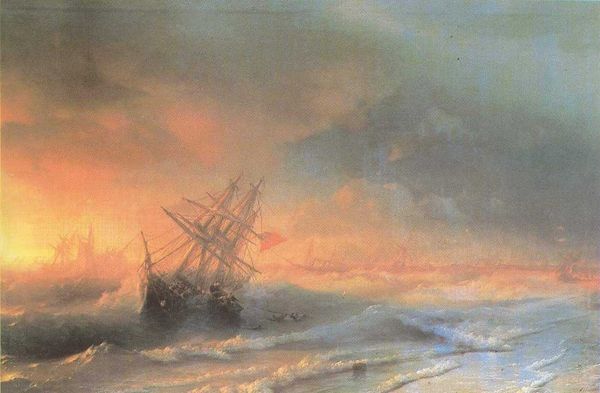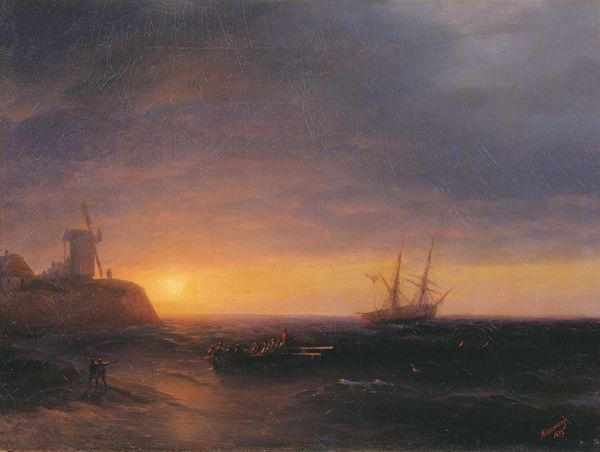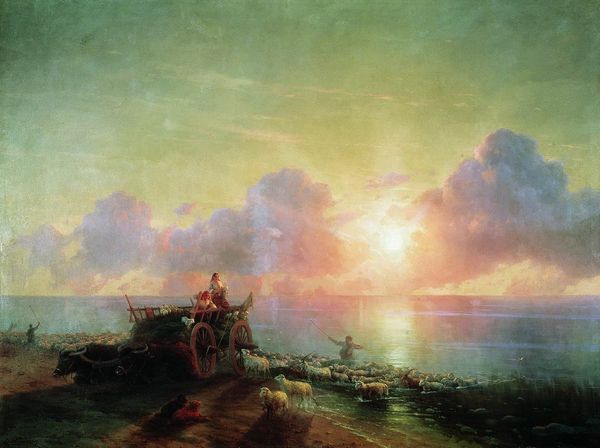
The Sea. Koktebel. 1853
0:00
0:00
ivankonstantinovichaivazovsky
Aivazovsky National Art Gallery, Feodosiya, Ukraine
Dimensions: 85 x 121 cm
Copyright: Public domain
Curator: Here we have Ivan Aivazovsky's "The Sea. Koktebel," painted in 1853. The vista depicts a serene, yet melancholic seascape. Editor: Yes, a somewhat elegiac, yet also turbulent scene. The light, emanating seemingly from the horizon itself, imbues the scene with a kind of transcendent calm, doesn’t it? Curator: The luminosity is, without question, masterfully achieved. Aivazovsky was celebrated for his capacity to capture the ephemeral quality of light. Though looking at this, I find my eye drawn more immediately to the evident craft behind the wave structures—and what must have gone into this. Look how heavy and tactile that surface is. You can almost feel the salt. Editor: Indeed, note the precise arrangement of the forms—the horizontal stretch of the sea bisected by the slanting masts of the distressed ship, mirroring, and inverted, by the skiff near the shore. The structural integrity established through that counterpoint is undeniable. However, the presence of a single ship fighting turbulent waves can trigger a different analysis based around the toil of seafarers and perhaps even colonial mercantile networks in Crimea and Ukraine. Curator: Aivazovsky, who became celebrated for similar maritime scenes, favored dramatization over strict naturalism. Note the heightened contrast and slightly exaggerated cloud formations. This aesthetic decision amplifies the symbolic tension inherent within the work, pointing less at social conditions and more at the formal tensions between darkness and illumination, chaos and structure, despair and hope. I suppose it speaks to romanticism over strict social realism? Editor: I concede that it is less overtly didactic in that respect; the light performs a unifying function here, and the formal tension does make space for a certain type of hopeful or transformative viewing. But what kind of labour, or natural resources went into creating such sublime visions? In this way, art serves also to erase from memory how objects come into the world. Curator: Indeed, perhaps that very friction enriches the work’s lasting appeal, so many years after its production. Editor: It offers much to ponder. Thanks.
Comments
No comments
Be the first to comment and join the conversation on the ultimate creative platform.
